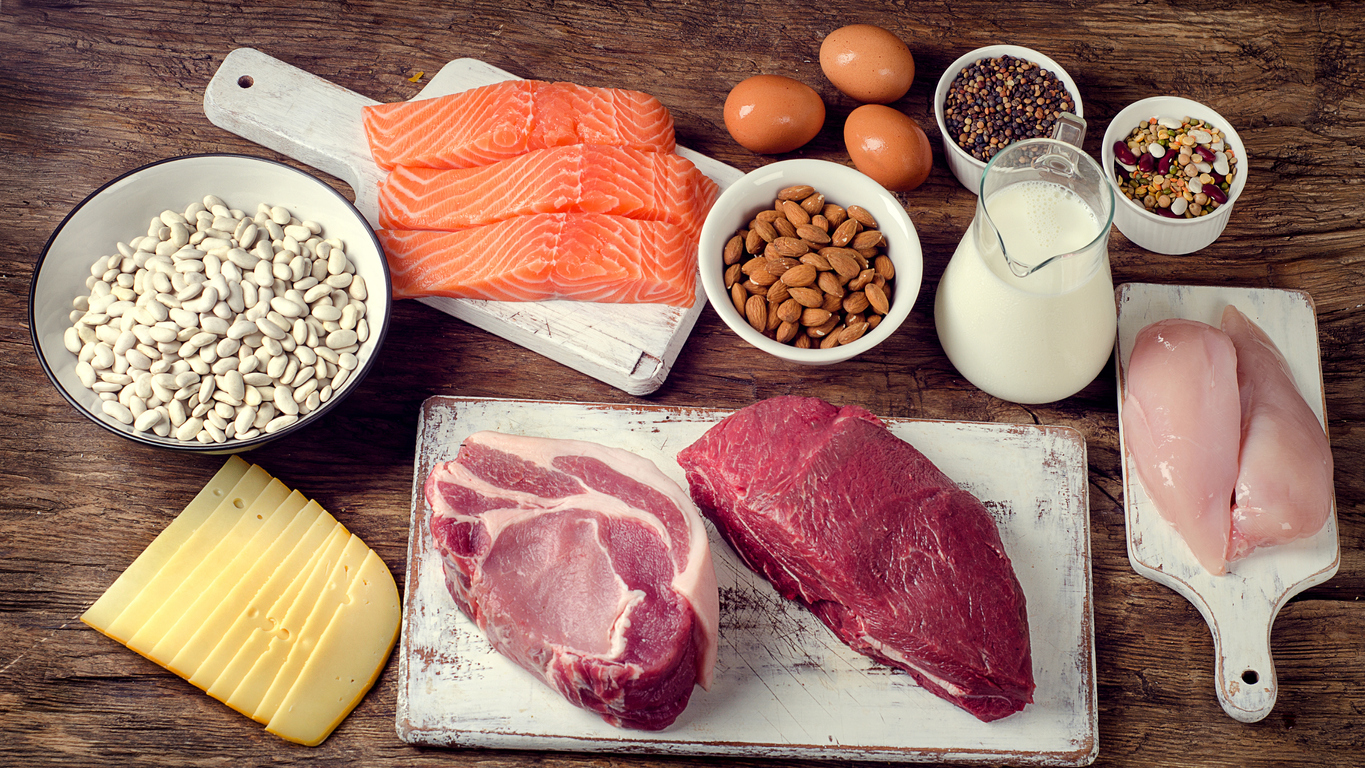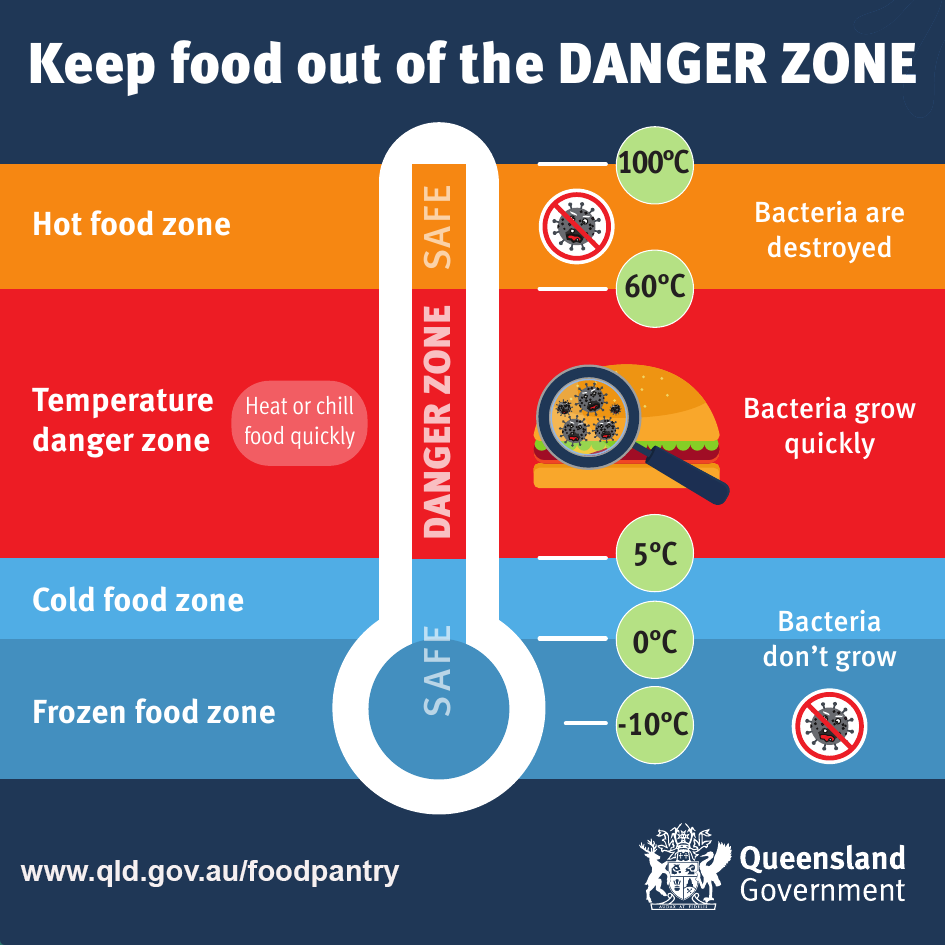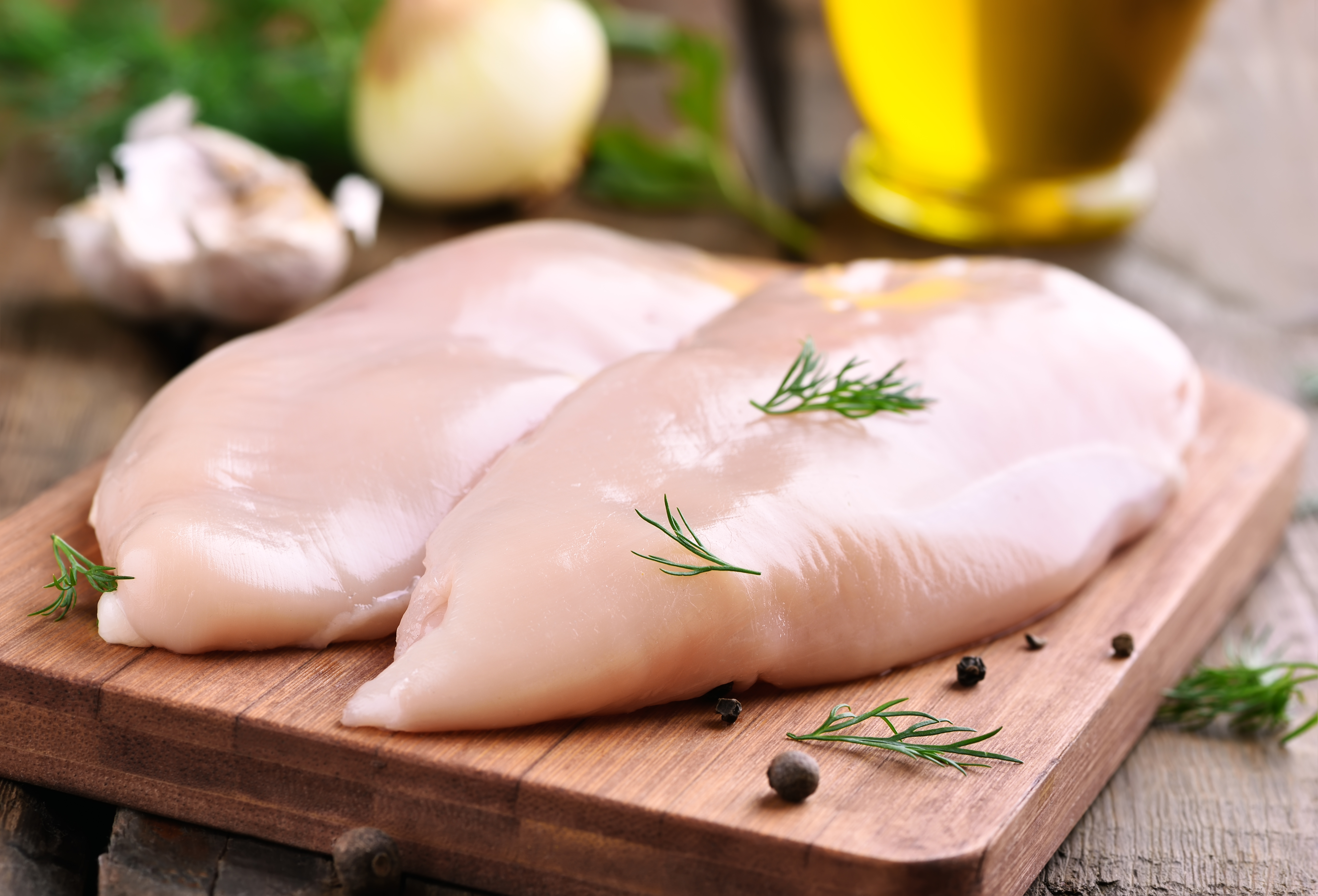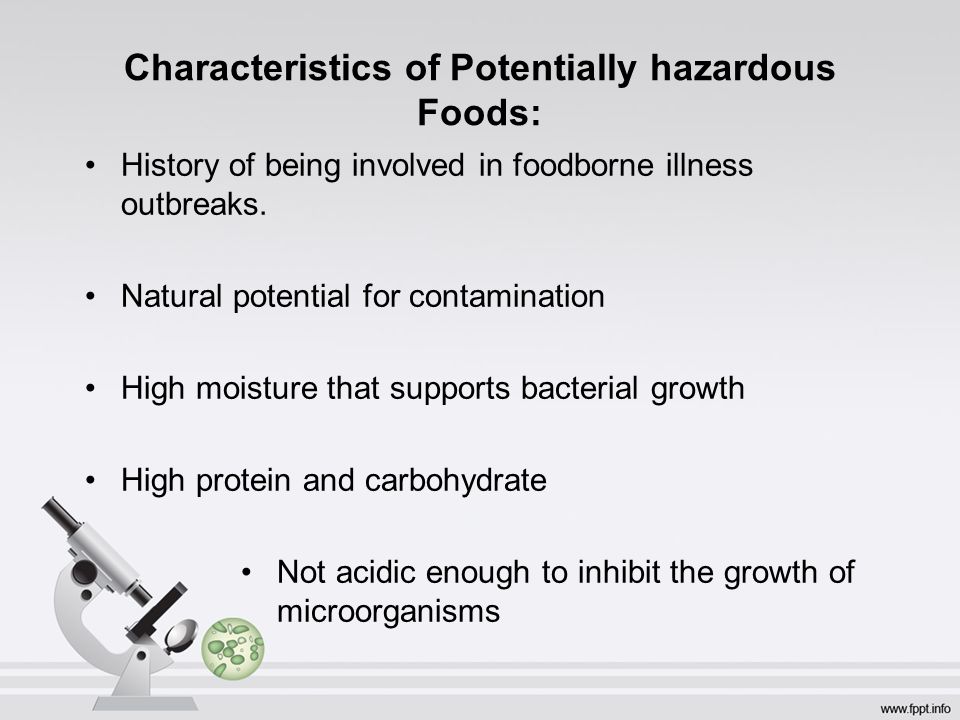potentially hazardous foods should always be
Ensuring foods are kept at temperatures between 140F 60C and 45F 7C Thawing certain foods can be potentially hazardous. Bacteria grows best between 41 degrees Fahrenheit and 140 degrees Fahrenheit.

Http Www Woodfruitticher Com Pdfs Preparing Food Pdf Preparation Food Preparation Prevention
Food and Drug Administration you should carefully control the temperature of potentially hazardous foods because they can support the growth of infectious or toxic microorganisms.

. A PHF is a food that. Potentially Hazardous Foods A Report of the Institute of Food Technologists for the Food and Drug Administration of the United States Department of Health and. From top to bottom please put these items in the correct order for storage.
All potentially hazardous food should be kept below 41 o F for cold foods or above 135 o F for hot foods except during necessary preparation time or a short display period. O Using the restroom o. Use a thermometer to check the temperature of food to make sure its at a safe temperature.
Potentially hazardous foods are also referred to. Potentially hazardous foods requiring refrigeration must be cooled by an adequate method so that every part of the product is reduced from 120 degrees Fahrenheit to 70 degrees Fahrenheit within two hours and from 70 degrees Fahrenheit to 45 degrees Fahrenheit or below within four additional hours. Hot or cold holding equipment may be required to store and display food during an event.
You can only keep food at another temperature if you can show it stays safe at that temperature. Potentially hazardous foods are high protein foods that are capable of supporting rapid and progressive growth of infectious or disease causing micro-. Potentially Hazardous Food is a term used by food safety organizations to classify foods that require time-temperature control to keep them safe for human consumption.
Bacteria growth in food can lead to foodborne illness. When food become unsafe we can always safely recondition the food. To be safe thawing should only be carried out in certain ways.
Plus it can act as an insulator if cooked inside the meat preventing the meat from reaching the required internal temperature. For this reason stuffing must always be cooked separately from meat. The following are considered PHFs.
A food thermometer is also required if potentially hazardous foods will be served. All potentially hazardous food should be kept below 41 o F for cold foods or above 135 o F for hot foods except during necessary preparation time or a short display period. Is neutral to slightly acidic - typically having a pH between 46 and 75.
Ad Learn more about common grocery items that may be Poisonous Foods today. Potentially hazardous food has to be cooled from 135 F to 70 F 57 C to 21 C within 4 hours and from to 70 F to 41 F 21 C to 5 C within 2 hours. A food thermometer is also required if potentially hazardous foods will be served.
Potentially hazardous food is a defined concept identifying foods to be maintained at certain temperatures to minimize the growth of any pathogenic microorganisms that may be present in the food or to prevent the formation of toxins in the food ANZFSC Standard 322 cl. The Michigan Food Code defines potentially hazardous food as a natural or synthetic food that requires temperature control because it is capable of supporting the rapid and progressive growth of bacteria. The following activities should always be followed by thorough hand washing.
Bacteria that cause food poisoning may grow in potentially hazardous foods that are not kept below 41 Degrees F. According to the US. Generally potentially hazardous food must always be at 5oC or colder or 60oC or hotter to keep it safe.
Fish shellfish poultry milk and red meat keep longer at temperatures below 40 Degrees F. Potentially hazardous Foods PHFs are foods that require time and temperature control in order to prevent bacteria growth. Cold holding of potentially hazardous foods should always be at 41 Degrees F.
Contains moisture - usually regarded as a water activity greater than 085. Cut leafy greens as of 5113. Stuffing is considered potentially hazardous as its often cooked with potentially hazardous foods such as poultry or meat.
Potentially hazardous foods In Standard 322 potentially hazardous food is defined as food that has to be kept at certain temperatures to minimise the growth of any pathogenic microorganisms that may be present in the food or to prevent the formation of toxins in the food. Leaving food in its can after opening. Eggs except for air-dried hard boiled eggs with an intact shell Cooked fruits or vegetables including cooked starches Fresh herb-in-oil mixtures.
List of Potentially Hazardous Foods. Hot or cold holding equipment may be required to store and display food during an event.

An Overview Of Potential Hazards In Food Service Operations Ppt Video Online Download

Pin By Colleen R Cervantes On Just Plain Useful Pie Chart Health Thermometer

Potentially Hazardous Foods Health And Wellbeing Queensland Government

An Overview Of Potential Hazards In Food Service Operations Ppt Video Online Download

Potentially Hazardous Foods Health And Wellbeing Queensland Government

List Of Potentially Hazardous Foods

Food Borne Illness And Food Poisoning Which Foods Are The Worst Food Borne Illness Food Poisoning Food Safety And Sanitation

An Overview Of Potential Hazards In Food Service Operations Ppt Video Online Download
